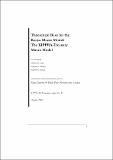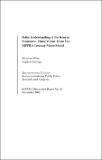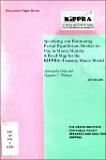Discussion Paper No. 11 of 2001 on Theoretical Base for the Kenya Macro Model: The KIPPRA-Treasury Macro Model
| dc.date.accessioned | 2021-03-03T07:47:08Z | |
| dc.date.available | 2021-03-03T07:47:08Z | |
| dc.date.issued | 2001 | |
| dc.identifier.uri | http://repository.kippra.or.ke/handle/123456789/2731 | |
| dc.description.abstract | This paper provides a birds-eye view of the theoretical underpinnings of the KIPPRATreasury macroeconomic model. The model is built mostly along the now fairly standard lines of the aggregate demand–aggregate supply framework. The model is demand driven in the short run, with multiplier effects through consumption and investment and the external sector. An important assumption of this model is that any demand is actually met; that is, we assume that the price system ensures that there is always some excess capacity in the economy. This is justified by the liberalized nature of the Kenyan economy. The model is designed in such a way that it has a tendency to return to equilibrium with ‘normal’ capacity utilization and unemployment rates in the medium and long run. The main feedback mechanisms in the real economy work through the wage–price spiral, the interest rate and the real exchange rate. The paper is also accompanied by an extremely simplified and elaborated annex that contains step-by-step derivation of major equations of the model. This is aimed at making the model accessible to a wide audience. | en |
| dc.language.iso | en | en |
| dc.publisher | The Kenya Institute for Public Policy Research and Analysis (KIPPRA) | en |
| dc.relation.ispartofseries | DP/11/2001; | |
| dc.subject | Macro Model | en |
| dc.subject | Price determination | en |
| dc.subject | Wage determination | en |
| dc.subject | Nominal model | en |
| dc.title | Discussion Paper No. 11 of 2001 on Theoretical Base for the Kenya Macro Model: The KIPPRA-Treasury Macro Model | en |
| dc.type | KIPPRA Publications | en |
| ppr.contributor.author | Huizinga, Free; Geda, Alemayehu; Ndung'u, Njuguna S. & Karingi, Stephen N. |
Files in this item
This item appears in the following Collection(s)
-
Discussion Papers [326]




